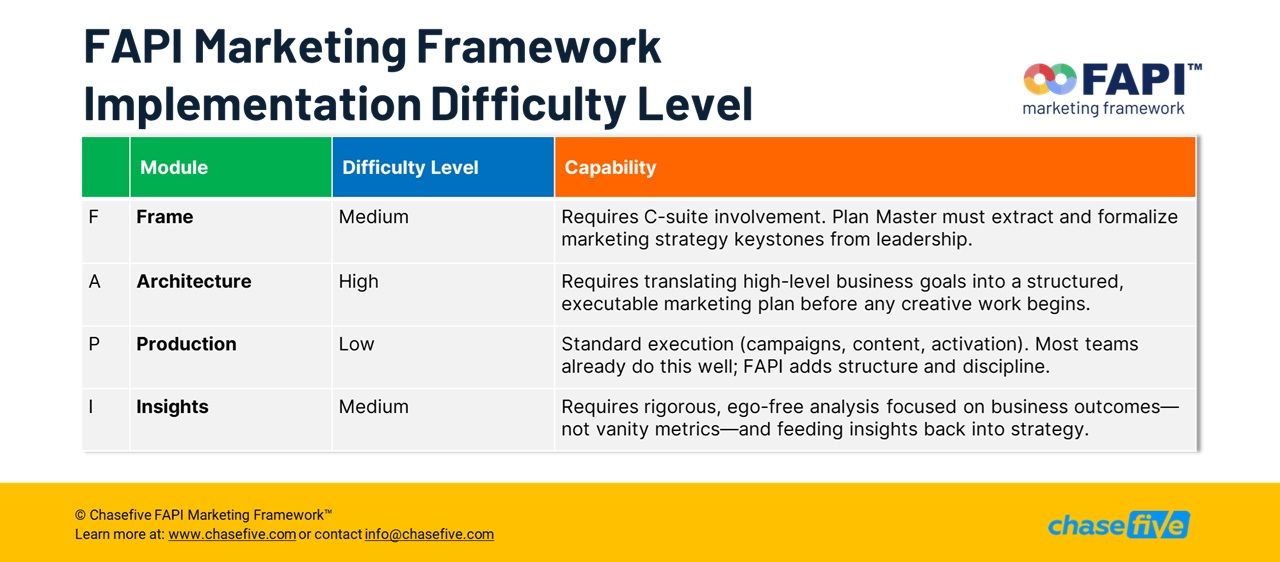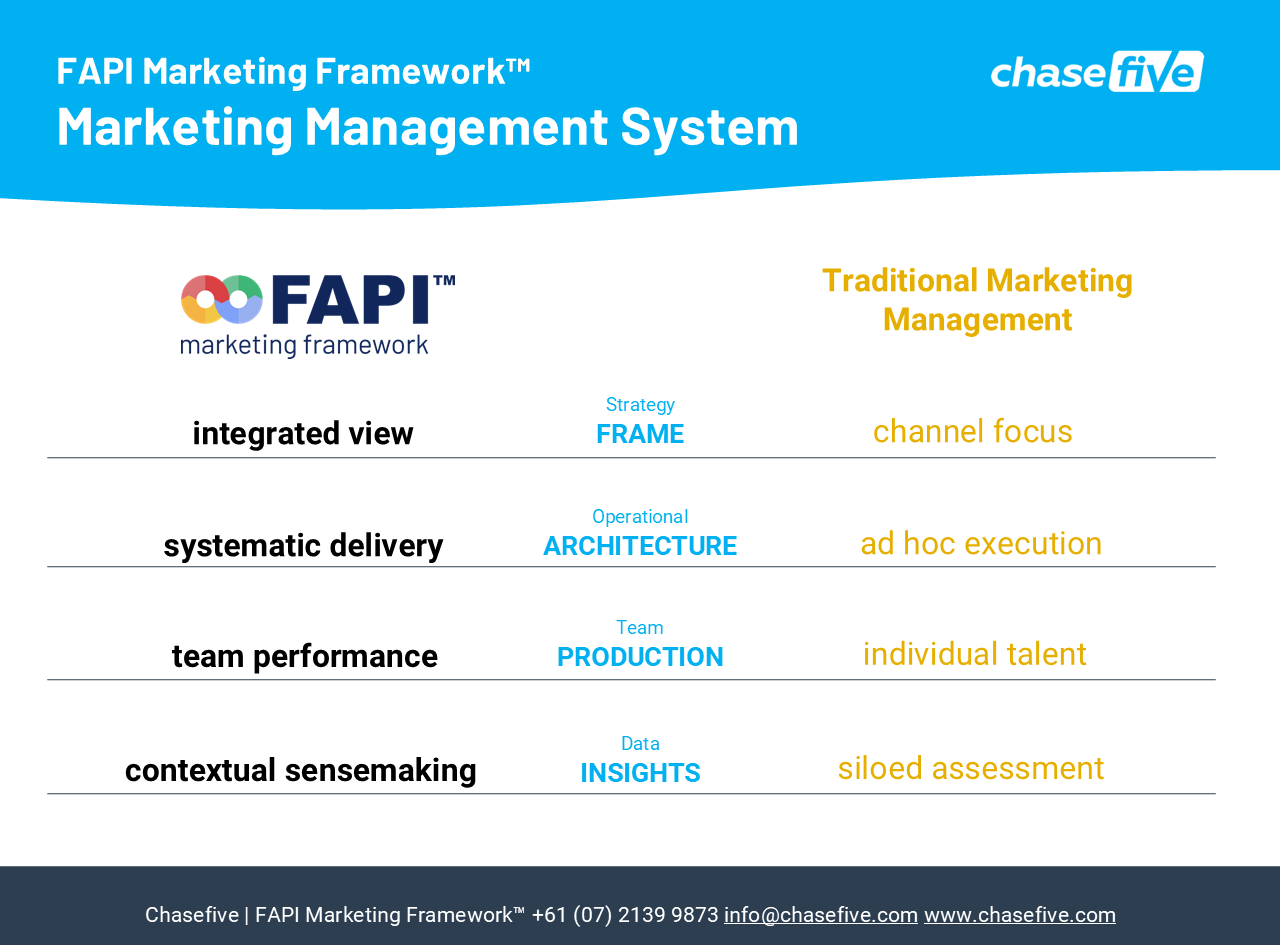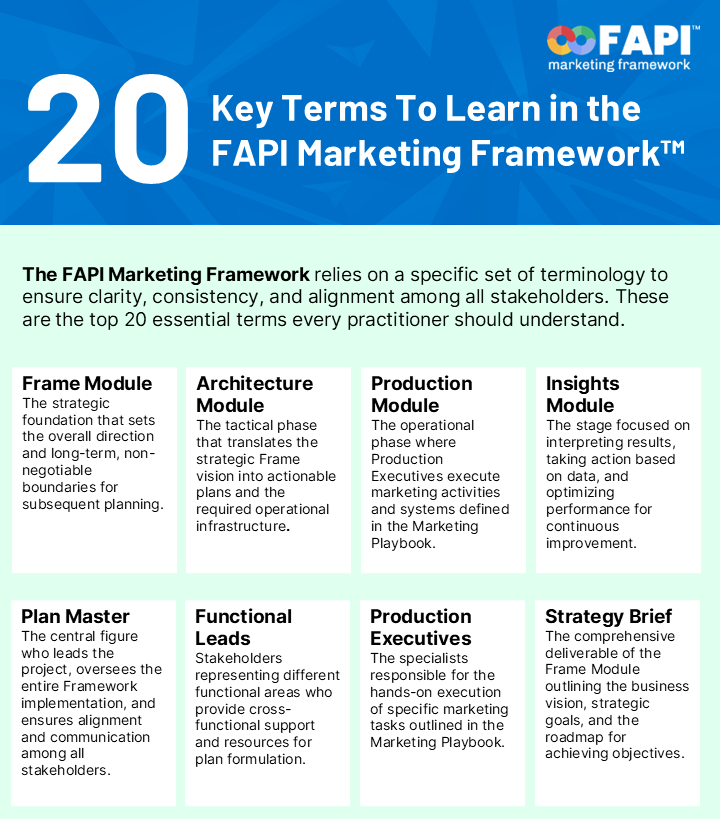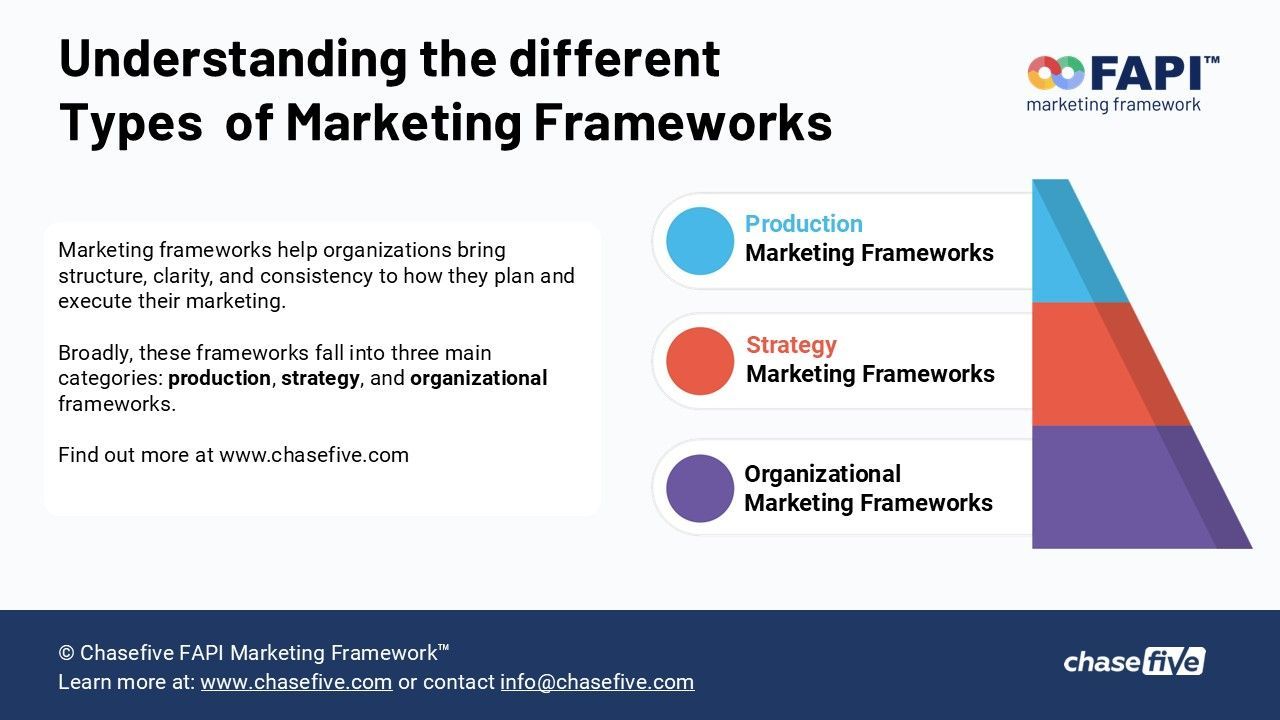The Importance of Rationalizing Marketing Metrics
Within the FAPI Marketing Framework, the rationale behind categorizing metrics into Delivery Metrics, Performance Metrics, and Impact Metrics is to ensure a comprehensive and multi-layered evaluation of marketing effectiveness, facilitating strategic decision-making and continuous performance improvement.
This categorization, crucial for the Insights Module, helps to make sense of marketing data and effectively evaluate outcomes.
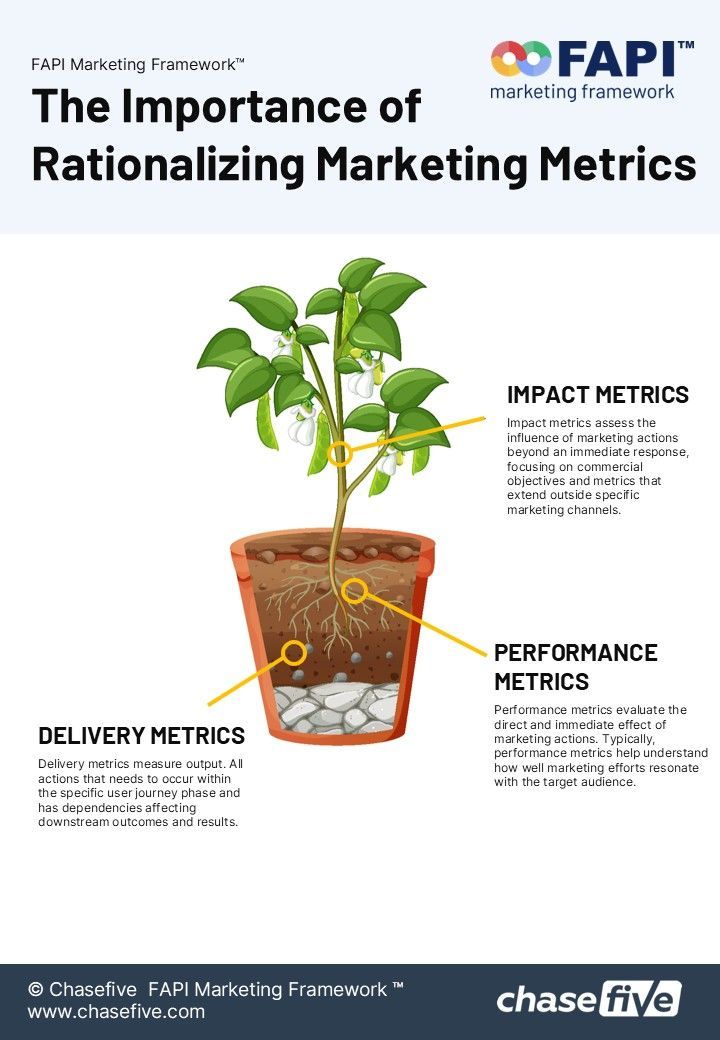
Here's a breakdown of each marketing metric within the FAPI Marketing Framework:
Delivery Metrics: These metrics focus on quantitative goals and specific actions that need to be completed. They provide insights into the extent of task execution and operational efficiency, acting as indicators of whether marketing activities are being carried out as planned. For example, the number of campaigns launched, content pieces published, or ads displayed fall into this category.
A common misconception is that delivery metrics, like impressions, are solely about purchasing ad space; however, achieving the desired volume and quality often requires optimization skills. The Plan Master measures and tracks the delivery of impressions to ensure they are served at the planned cost per thousand impressions (CPM). In essence, if the required volume of impressions isn't met, the campaign's overall performance may fall short of the target.
Performance Metrics: These metrics align with qualitative goals and are designed to assess the desired outcomes. They evaluate the effectiveness of marketing activities, measuring aspects like customer engagement, brand perception, and overall satisfaction. Performance marketing metrics help to understand how well marketing efforts resonate with the target audience. Examples include social media engagement rates, customer feedback scores, and brand sentiment analysis. In the FAPI Framework, performance metrics are primarily operational and can be quite granular, used in conjunction with Production Executives. For instance, metrics like email open rates, organic search rankings, and social media engagement would be set as specific targets in the Architecture Module to monitor.
Impact Metrics: These are the most crucial metrics, as they gauge the influence of marketing activities on the overall strategic plan. They look at long-term effects and contributions to broader business objectives, such as market share growth, return on investment (ROI), and sustainable competitive advantage. Impact metrics provide a holistic view of how marketing efforts contribute to the company's success and strategic direction. Metrics such as ROI, customer lifetime value (CLTV), and market penetration rates are typical examples. While individual marketing activities or campaigns cannot be evaluated in isolation against commercial targets for ROMI, their success contributes to the overall ROMI result of the marketing campaign. These metrics are most relevant for discussions with senior managers, including the CEO and CFO.
This structured approach to metrics ensures that marketing efforts are meticulously tracked and strategically aligned with the company's broader objectives, promoting informed decision-making, enhancing strategic alignment, and driving business success. Success in marketing insights depends on well-defined performance metrics and targets, reliable data, and accurate data interpretation.
Learn more and access FREE resources at the FAPI Marketing Framework Academy
